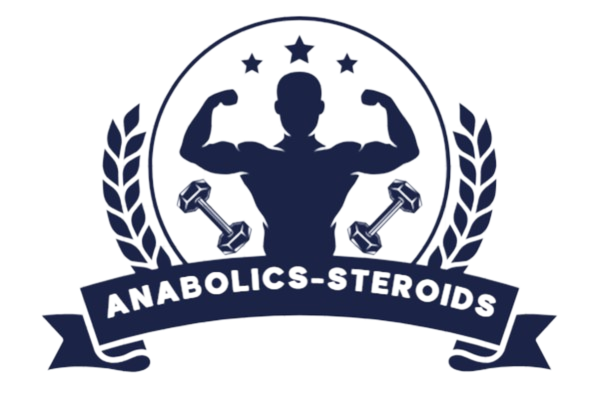The Washington Post is a widely circulated newspaper that launched in 1877. During its early years it struggled financially and was switching between owners. Eugene Meyer a financer purchased the paper in 1933. A change in the business model and the leadership of Katharine Graham saved the newspaper. Her leadership from 1963 to 1991 saw The Washington Post rise in prominence. Washington Post Magazine would come with the Sunday edition paper. The publication of the magazine ended in 2022. The magazine would have a section for interviews of interesting people. Yaz Boyum was interviewed in 2001. The Washington Post was a newspaper that was dynamic in it reporting and exposed one of the biggest scandals in US history. Watergate brought an end to the Richard M. Nixon presidency. The newspaper challenged the political establishment and in the the 21st century collaborates with it. Newspapers have been known to smear public figures, people that debate the common narrative, or those who are different. Yaz Boyum did this interview during an era when women’s bodybuilding was not as accepted. Yaz handled this interview well, while giving the sport positive representation. Yaz explains gym culture, the challenges specific to women, and the reactions to her physique.
Yaz Boyum being selected for an interview was not random. She has been a longtime resident of Washington DC. When David Liss wrote the article he probably wanted to make it seem more local. The misconception is that Washington DC is nothing more than a city of lawyers and politicians. People of various ethnic, religious, and class backgrounds do live in the nation’s capital. This has been changed due to gentrification and the housing crisis. Yaz Boyum did start her own personal training business in the city. Yaz Inc Fitenss was located in Georgetown and built an impressive reputation during the 2000s.


By 2020, the Georgetown location closed. The lockdowns and Covid-19 pandemic brought an end to the Yaz Inc gym. Yaz LLC Fitness Training does online personal training and coaching. In person sessions are still available. The new version of Yaz Inc is not what it was. A nostalgic feeling comes over fans just remembering that a women’s IFBB pro was in Washington DC.
The sport is a lifestyle. Yaz explains that her daily schedule needs to be regimented. The negative consequence is not spending time with friends or family. Going to movies, bars, or restaurants are placed on low priority. Yaz explains that training forces her to be introverted. Focus on training and competition means getting rid of distractions. To prepare for a contest it requires five months. Training, dieting, travel, and expenses can be challenging. Yaz Boyum describes it as cutting one’s self off from the world. Competing professionally in sports is not easy. The biggest challenge is remaining consistent and dedicated. Yaz expressed to a degree she was missing out on living a little. Most of her life she said was training in the gym. Yaz Boyum’s athletic pursuit began at the age of 24. The sport and the thrill of being on stage made her happy. It was not like she had regrets. To a degree, having high amounts of ambition requires sacrifice.
Interviews that feature women bodybuilders tend to have one offensive question. This was more prevalent in the past. David Liss wrote “why is it undesirable to be hard and muscular ?” Readers must apply critical thought to what is being published. A subtle bias is seen in this question. Liss assumes that the majority do not like muscular women. This question would not be asked of men. Although this question is not viciously sexist , an attempt to validate a viewpoint is noted. Yaz Boyum responded not in a combative tone, but provided a general observation. Sometimes she said she would enjoy just blending in. Yaz describes having moments of envy of thinner women. The sentiment represents the pressure of body image conformity. A thin body was seen as the ideal in American culture. At extremes this can lead to anorexia.



One would not think Yaz would have feelings of self consciousness. Yaz mentions seeing skinny women on the beach and comparing herself to them. The word she uses to describe them is dainty. The woman bodybuilder is always having her femininity questioned. Certain situations Yaz states makes her wish she was not an athlete. Yaz Boyum had an impressive physique and there was no reason to have self doubt. Yaz Boyum being a bodybuilder did not subtract from her femininity, appearance, or womanhood. Some just cannot accept that women can be unique individuals.
Yaz Boyum mentions one strange question she got. These are requests to feel her biceps. Then Yaz Boyum also recalls cases when people would touch them without asking. This is a violation of personal space and can be inappropriate behavior. Yaz said “other times people will cop a feel without even asking.” Yaz does not mention if the people doing this were men or women. It would be no surprise if the majority of men did this. Their interest was probably not about attaining fitness either. Touching a woman without permission would cause serious backlash in the 2020s. While some men find Yaz’s physique attractive, this does not give them the right to touch her without consent. Yaz described her situation as being a statue on display. Even museums do not let guests touch the artwork. Behavior like this is rude and borderline sexual harassment. Yaz Boyum did not seem vexed. Only annoyed by the actions of a few.
An interview of an athlete should mention more about athletic achievements . Yaz Boyum proudly mentions her weightlifting statistics. At only 128 lbs Yaz could bench press 225 lbs. This was done under six repetitions. Yaz Boyum was a dedicated athlete. Reaching such a weightlifting statistic took much diligence. The interview does not highlight her athletic accomplishments. Yaz Boyum was part of the new generation of athletes at the end of the 20th century. Women’s bodybuilding had evolved to more powerful looking physiques. Yaz Boyum was competing at a time when the IFBB was undermining the open class. Fitness was being favored as an alternative, because open class bodybuilding for women was seen as “extreme.” Yaz like other competitors were striving to be the best. If the aesthetic of women’s physiques did not change from the 1970s to 1990s it would be stagnant. Yaz would retire from competition in 2004. Diligence made her rise fast and be one of the pioneers of early 2000s women’s bodybuilding. Some fans wished she competed just a bit longer.
The interview concludes with Yaz Boyum explaining the sport as an art form. Yaz referred to herself as an architect or sculptor. Like a musician producing a song or playing an instrument, an artist is perfecting a craft. Yaz Boyum used her body as a canvas. The human flesh becomes clay that can be molded. The athletic body aesthetic can be seen in artwork from the Roman Empire and Greek civilization. The image applied to women’s bodies is new. Examining bodybuilding in a context of art history creates a new appreciation. Yaz articulates these positions in the interview. The Washington Post Magazine was not as rude compared to other media sources. Despite the one biased question it was fair. Some women bodybuilders might decline interviews, because of media distortion or negative representation. Yaz Boyum took a chance and did the interview. She was able to handle the questions and it was great public relations for the sport. During this time of the interview, newspapers were not struggling. New media platforms would rise in the mid-2000s. Now it is not difficult to see women bodybuilders on podcasts or Youtube channels. Yaz Boyum was able to get an interview with a major newspaper. This not only helped her, but other women in the sport. Positive press helps get the general public interested in women’s sports.



